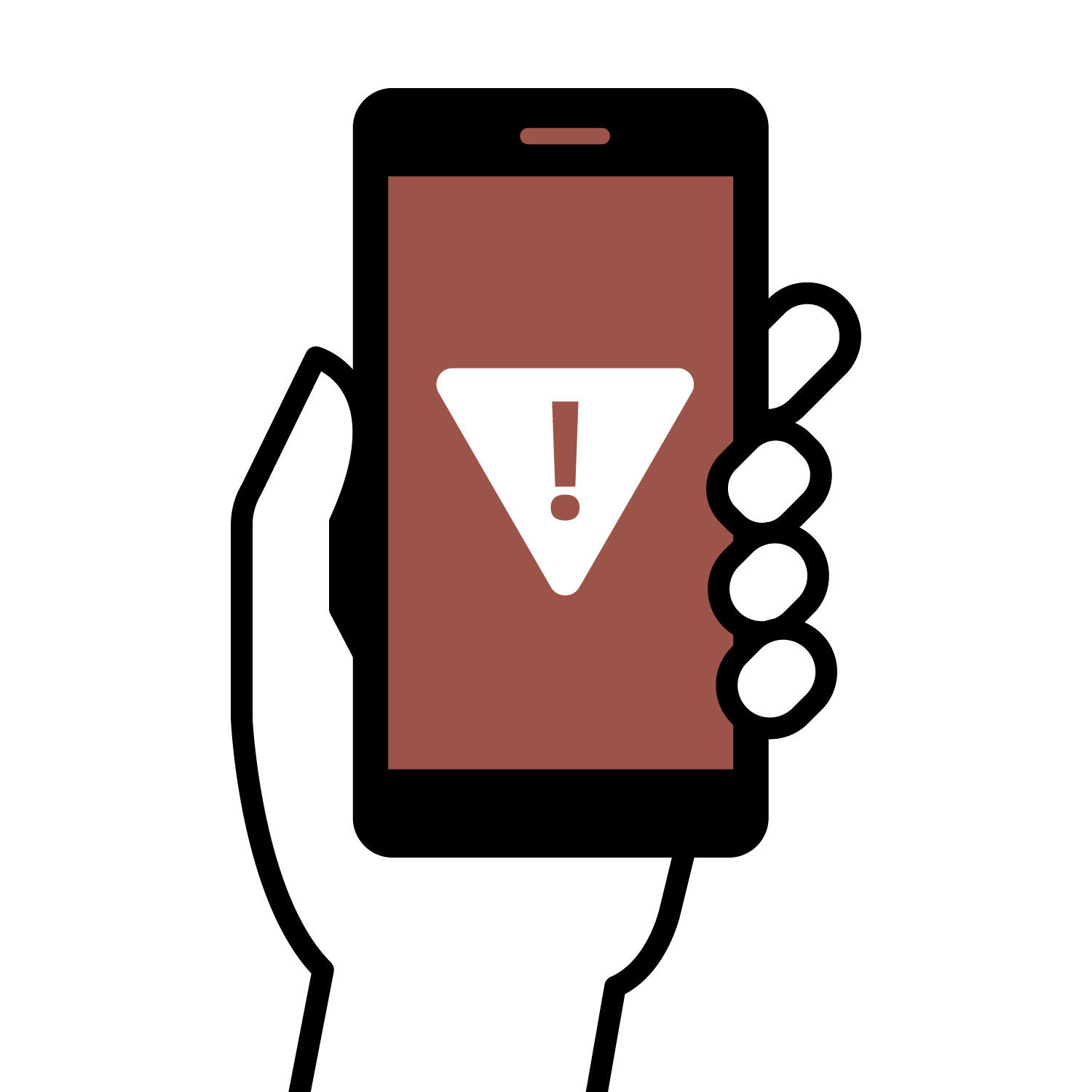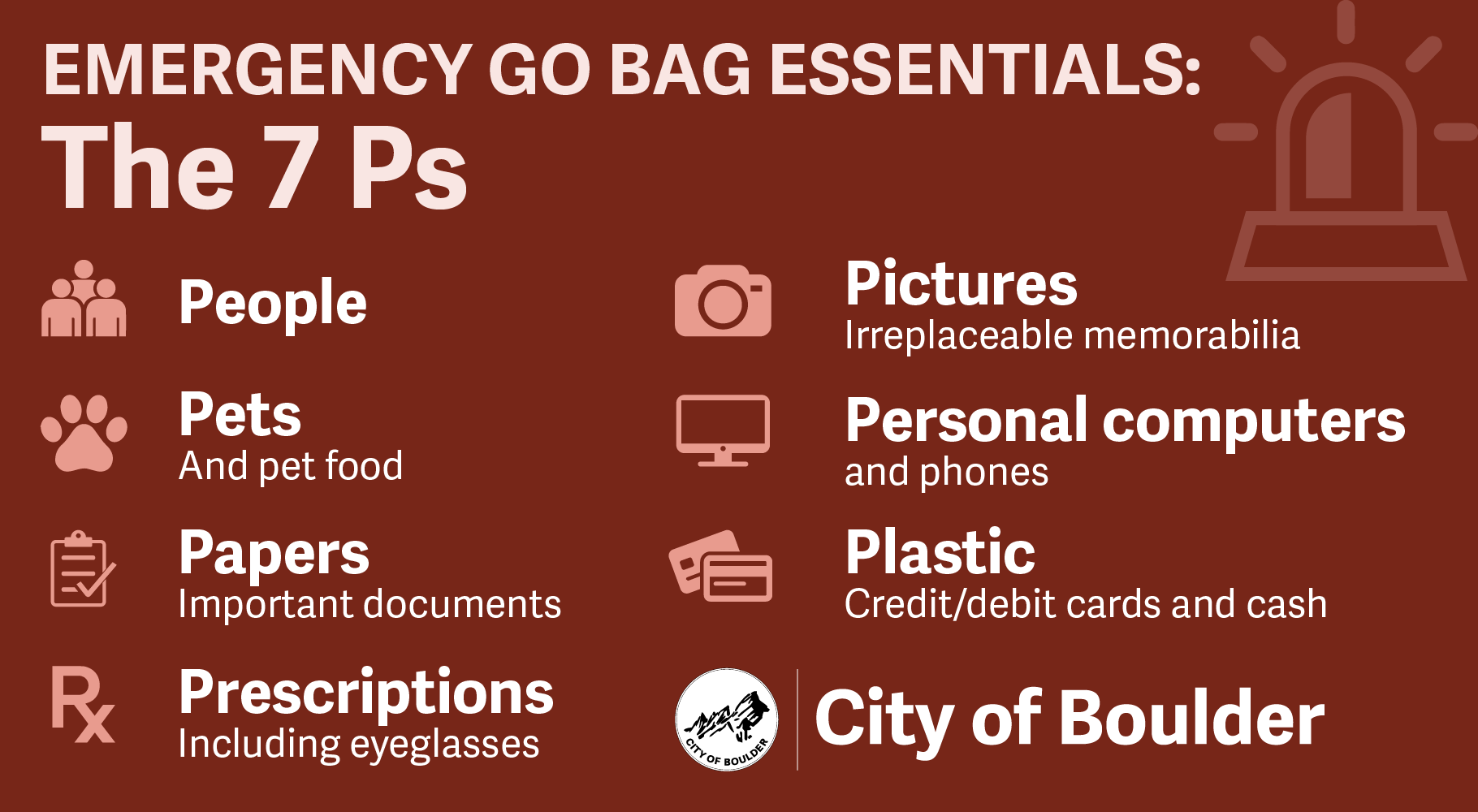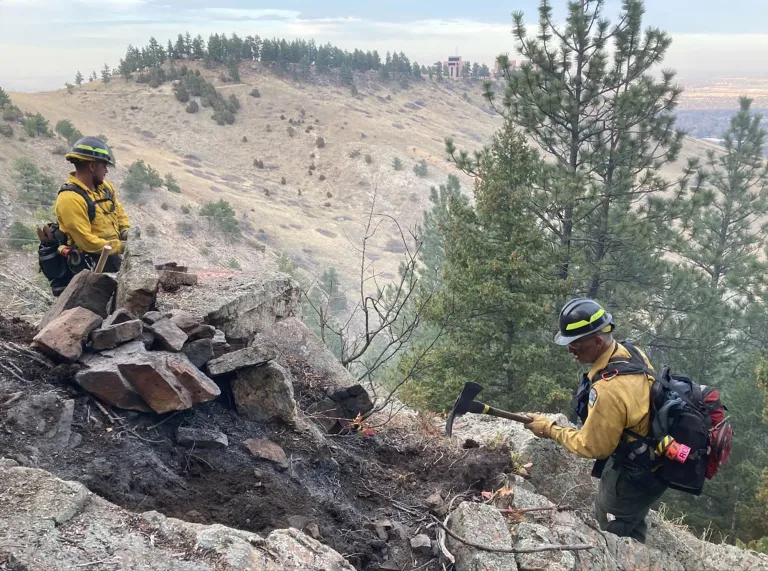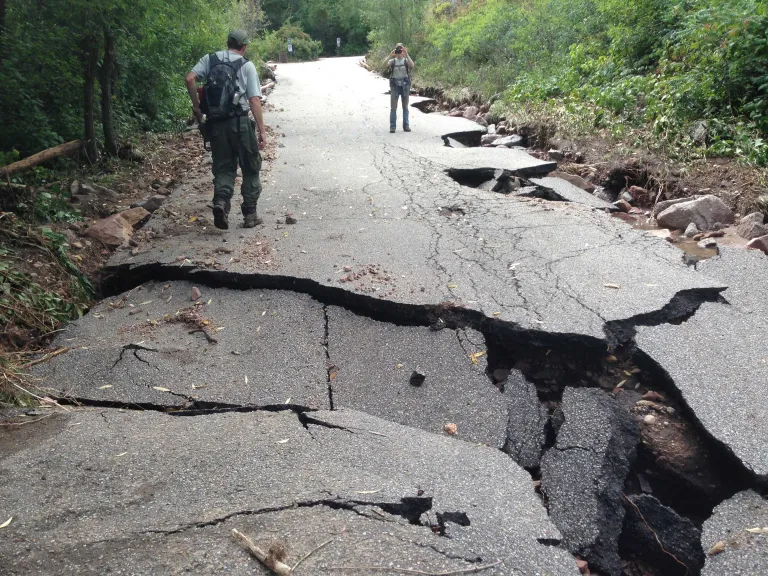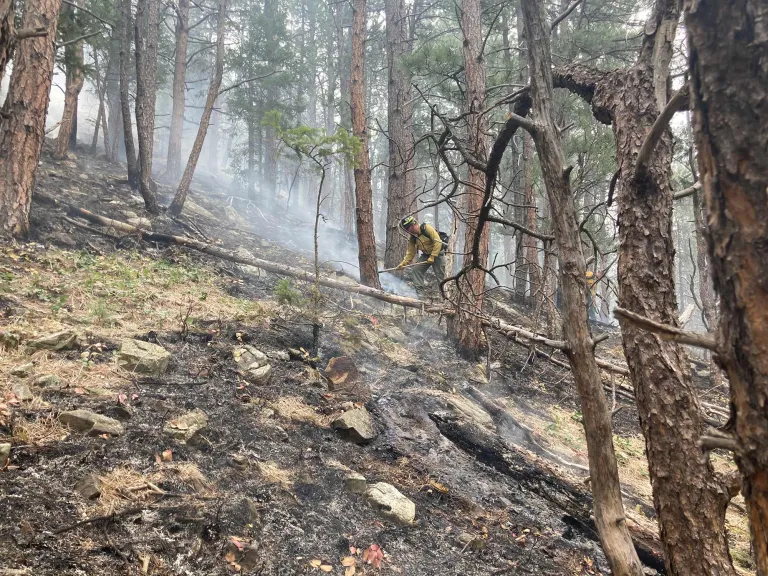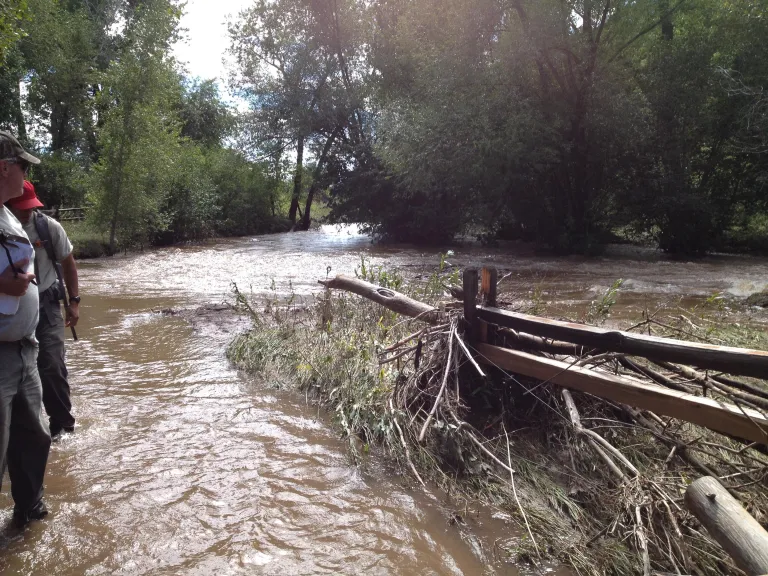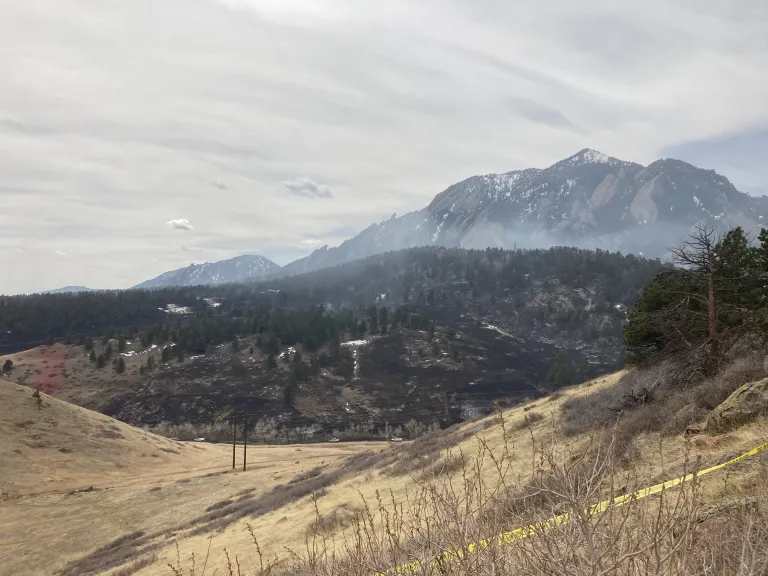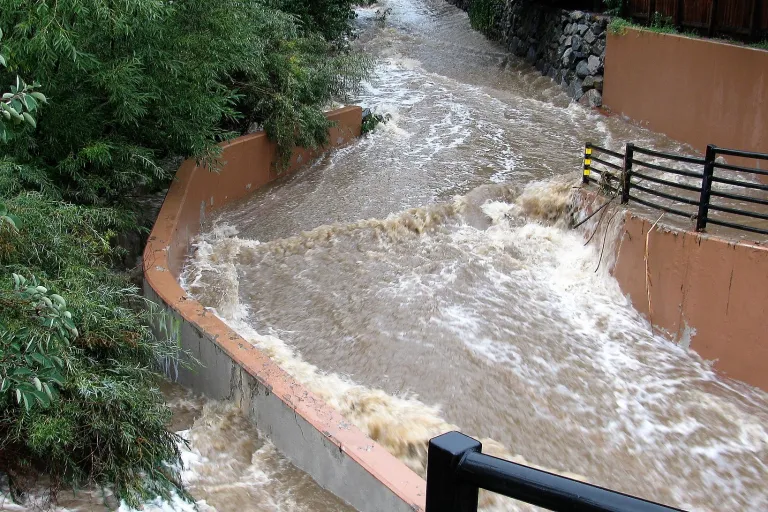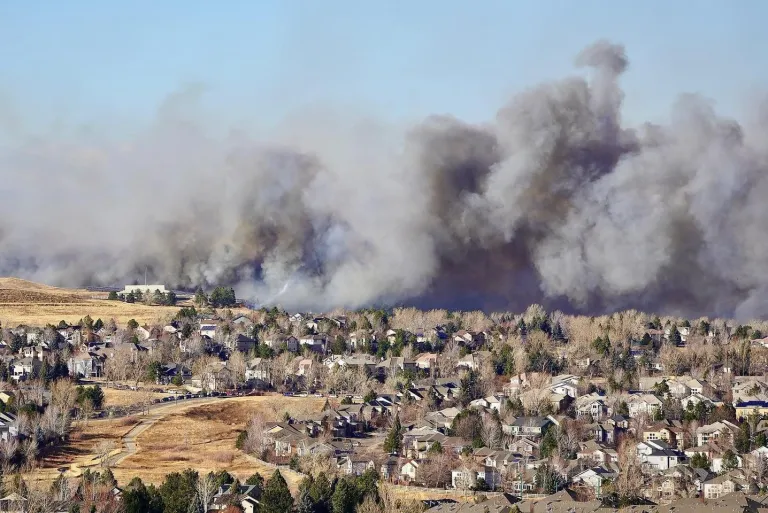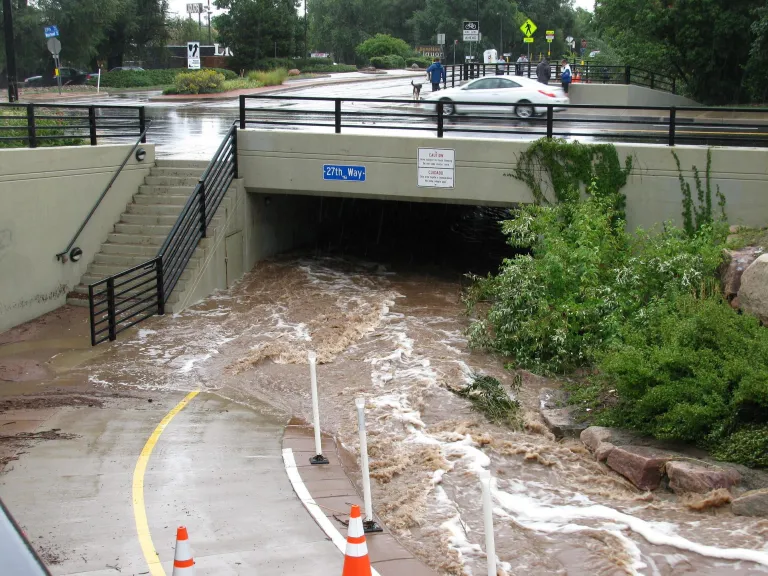How Does the City Respond to Emergencies?
In an emergency, the city and county assemble an emergency operations center (EOC) to coordinate operations to support the safety and security of our community. This includes mobilizing emergency resources such as transportation, evacuations, and shelters; sharing information; and coordinating with state and federal agencies.
Learn more about the city’s emergency response at boulderodm.gov/response/.
Why Is Boulder at Such High Risk?
Boulder’s location at the foot of the Rocky Mountains makes for stunning views, but it also puts us at greater risk to natural disasters. Boulder’s natural terrain and location at the mouth of numerous canyons creates a constant flood risk for the city.
Fifteen major creeks pass through town, including Boulder Creek, which flows right through downtown. The Front Range is also susceptible to wildland fires and drought, which create dry, less vegetated conditions and contribute to increased flood risk. In addition, Boulder’s propensity for sudden bursts of isolated and severe storms contributes to flash flooding risk. Flooding and wildfires demonstrate the connections between Boulder’s natural environment, climate change-related conditions and the interconnections between major hazards.
Increasing global temperatures exacerbate many of these hazards for community members. A 2018 study (PDF) found that climate change is rapidly changing Boulder’s risk environment:
- Wildland fire risk is projected to increase with projected damage from wildfires increasing by almost 50% from 2020 to 2050.
- Severe and extreme droughts are projected to double between 2020 and 2050.
- Increasing temperatures will impact public health costs due to extreme heat events as well as potential increases in allergy and asthma symptoms as a result of extended growing seasons.
- More intense, short duration precipitation events will impact urban drainage systems increasing the likelihood of localized flooding
